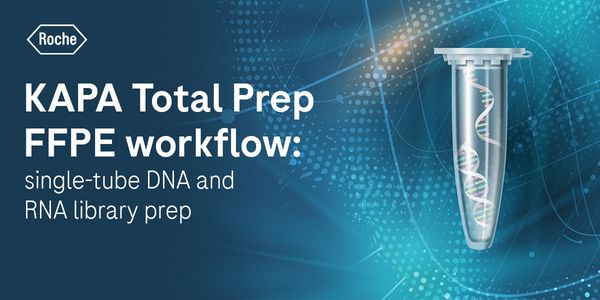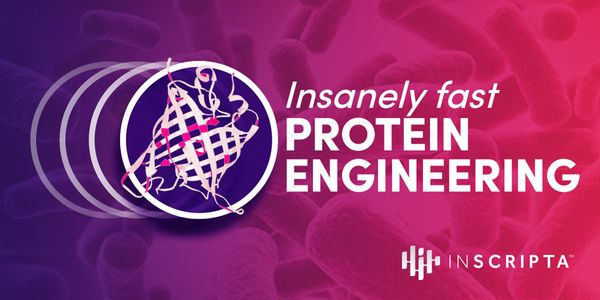Ribosome
Ribosomes are organelles found in cells that connect amino acids together during protein synthesis. Ribosomes are known as cells' translational apparatus as they perform a critical function of translating mRNA into proteins. They consist of two components, the small and large ribosomal subunits.
-
FEB 28, 2024 | 10:00 AMMariana Kiehl (Sr. Applications Scientist at Roche Sequencing & Life Science) describes the KAPA Total Prep FFPE workflow, a novel single-tube method for combined sequencing of DNA and R...NOV 17, 2022 | 8:00 AMDate: November 17, 2022 Time: 8:00am PST, 11:00am EST Genome editing is—or will soon be—in the clinic for several diseases and more applications are currently under development....Speaker: Natalia de Val , Zuben Brown , Veer BhattPresented at: Thermo Fisher Scientific - Electron Microscopy Webinars
Sponsored By: Thermo Fisher ScientificOCT 27, 2021 | 10:00 AMDate: October 27, 2021 Time: 10:00am (PDT), 1:00pm (EDT) The COVID-19 pandemic has brought global awareness to the dangers of emerging pathogens to human health and welfare. Common molecular...OCT 14, 2021 | 7:00 AMDate: October 14, 2021 Time: 7:00am (PDT), 10:00am (EDT) Heterologous protein expression in model organisms has many applications, including protein engineering, production of industrial enz...SEP 08, 2021 | 10:30 AMVaricella zoster virus (VZV) causes two clinically distinct forms of disease, varicella and herpes zoster. These forms can each present with multiple manifestations ranging from lesions incl...Speaker: Jon Armstrong, MScMAY 10, 2017 | 5:00 AMReliable autologous expression of recombinant human proteins - from gene sequence to the expressed and purified protein - in human or CHO cells is essential for many aspects of biomedical res...SEP 02, 2015 | 6:00 AMManaging microbial contaminants is critical during the manufacturing of biologics, food and beverage to ensure that products meet the high quality product standard as well as staying complian...MAY 14, 2015 | 12:00 PMOver the past few years, evidence has been accumulating to indicate that ribosomal subunits are not simply tape-heads that decode mRNA sequences into polypeptide chains, but that they also pl...AUG 20, 2014 | 7:15 AMImagine a world in which we could adapt biology to manufacture any therapeutic, material, or chemical from renewable resources, both quickly and on demand. Industrial biotechnology is one of...AUG 21, 2013 | 1:00 PMC.E. CREDITSCodon-optimization describes gene engineering approaches that use synonymous codon changes to increase protein production. It is used extensively for expressing recombinant protein drugs, gen...
FEB 28, 2024 | 10:00 AM
Mariana Kiehl (Sr. Applications Scientist at Roche Sequencing & Life Science) describes the KAPA Total Prep FFPE workflow, a novel single-tube method for combined sequencing of DNA and R...
NOV 17, 2022 | 8:00 AM
Date: November 17, 2022 Time: 8:00am PST, 11:00am EST Genome editing is—or will soon be—in the clinic for several diseases and more applications are currently under development....
Speaker:
Natalia de Val
, Zuben Brown
, Veer Bhatt
Presented at: Thermo Fisher Scientific - Electron Microscopy Webinars
Sponsored By: Thermo Fisher Scientific
Sponsored By: Thermo Fisher Scientific
OCT 27, 2021 | 10:00 AM
Date: October 27, 2021 Time: 10:00am (PDT), 1:00pm (EDT) The COVID-19 pandemic has brought global awareness to the dangers of emerging pathogens to human health and welfare. Common molecular...
OCT 14, 2021 | 7:00 AM
Date: October 14, 2021 Time: 7:00am (PDT), 10:00am (EDT) Heterologous protein expression in model organisms has many applications, including protein engineering, production of industrial enz...
SEP 08, 2021 | 10:30 AM
Varicella zoster virus (VZV) causes two clinically distinct forms of disease, varicella and herpes zoster. These forms can each present with multiple manifestations ranging from lesions incl...
Speaker:
Jon Armstrong, MSc
MAY 10, 2017 | 5:00 AM
Reliable autologous expression of recombinant human proteins - from gene sequence to the expressed and purified protein - in human or CHO cells is essential for many aspects of biomedical res...
SEP 02, 2015 | 6:00 AM
Managing microbial contaminants is critical during the manufacturing of biologics, food and beverage to ensure that products meet the high quality product standard as well as staying complian...
MAY 14, 2015 | 12:00 PM
Over the past few years, evidence has been accumulating to indicate that ribosomal subunits are not simply tape-heads that decode mRNA sequences into polypeptide chains, but that they also pl...
AUG 20, 2014 | 7:15 AM
Imagine a world in which we could adapt biology to manufacture any therapeutic, material, or chemical from renewable resources, both quickly and on demand. Industrial biotechnology is one of...
AUG 21, 2013 | 1:00 PM
C.E. CREDITS
Codon-optimization describes gene engineering approaches that use synonymous codon changes to increase protein production. It is used extensively for expressing recombinant protein drugs, gen...










